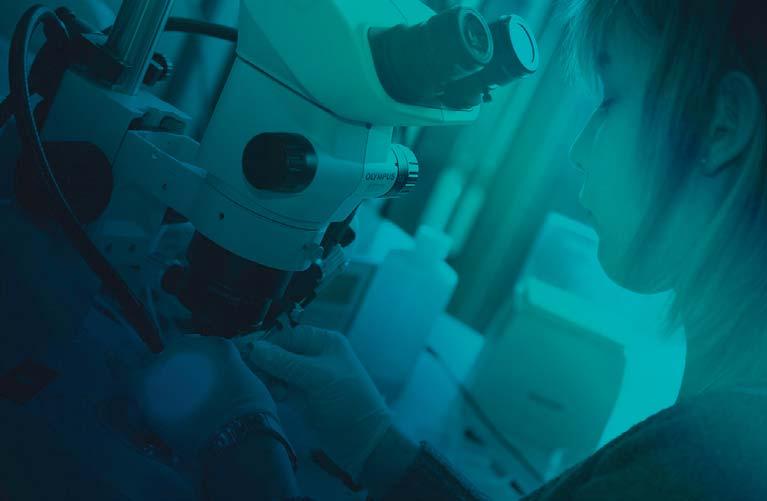Taradon Laboratory
o
© Taradon Laboratory
i n T e c h n o
To reinforce its position, Taradon Laboratory has defined as priority targets baby food (Lait Nacre), oral care products, food preservation, and pharmaceutical properties (antiviral activities of lactoferrin and ions produced by lactoperoxidase). A marketing strategy promised to success!
t
Taradon Laboratory has partnered with the French pharmaceutical company Alaxia for the development of a lactoferrin-OSCN-ions complex (hypothiocyanites) produced by lactoperoxidase to fight against pulmonary infections in people with cystic fibrosis. Based on these results it developed and patented a new lactoferrin-I2 (SCN)-complex (iodine-thiocyanate) produced by lactoperoxidase which is very reactive against viruses such as H1N1 and SARSCoV-2. This should enable the development of an oral spray and a nasal spray to prevent the spread of viruses.
a
Dr Perraudin developed a very specific technology for the extraction of lactoferrin and lactoperoxidase and opened three successful production units in collaboration with Synfina-oléofina, Sud-lait, Domo Food Ingredients and Belgomilk. Moreover, he developed and patented a new production technology to obtain lactoferrin with an optimal biological activity and no side effect. A secondgeneration Lactoferrin or Lactoferrin-NFQ (Lactoferrin Novel Food Quality) is under development and by 2021 the first purification unit of lactoferrin and lactoperoxidase will open its doors on Taradon Laboratory’s production site, in Ghislenghein, with the collaboration of the Ideta Group, WapInvest and other financial partners. Second-generation lactoferrin will give Taradon Laboratory a technological advantage over its competitors worldwide.
v
Taradon Laboratory created its own baby food (Lait Nacre) containing lactoferrin: distributed in China and South-East Asia, it avoids premature and newborn babies to suffer from late-onset sepsis. In 2010 Taradon Laboratory launched in India “Laktrum”, a food supplement for babies which allows to cope with the Failure To Thrive (FTT). For its part, the Anoxident range of mouthcare products contain a patented, bio-mimetic complex to help correct imbalances which could increase free radicals and cause unwanted plaque build-up.
o
Dr Jean-Paul Perraudin, managing director of Taradon Laboratory
Meanwhile Taradon Laboratory collaborates with the Centre d’Economie Rurale (in Marloie) which collects the colostrum in order to preserve the activity of the biological molecules it contains. Dr Perraudin has developed a technology to extract immunoglobulins and growth factors with a two-fold objective: to improve human and animal health in a preventive way and to replace toxic synthetic molecules used for food preservation by molecules of natural origin.
n
S
ince the years 70’, Dr Perraudin has devoted his research activities to understand the biological significance of molecules contained in secretion liquids for human and animal health protection. The most important molecules in that respect are lactoferrin, lactoperoxidase, lysozyme, immunoglobulins, growth factors, superoxide dismutase, oligoelements, vitamins and others. In order to market his scientific research Dr Perraudin chose cow’s milk after demonstrating its molecules worked similarly to those extracted from human milk, while being usable to protect human and animal health. Dr Perraudin then carried out a scientific study of these molecules for formulation, production and marketing purposes.
n
Created in 2008 and led by Dr Jean-Paul Perraudin, a worldwide leader in the lactoferrin and lactoperoxidase domain, Taradon Laboratory specialises in researching and applying the health-promoting properties of naturallyderived milk and plant molecules which are biologically equivalent to those present in human secretion liquids.
I
A pioneer of lactoferrin and lactoperoxidase production for health and food applications
l g
93
y
© Taradon Laboratory
o
Taradon Laboratory Avenue Léon Champagne 2 - 1480 Tubize Tel.: +32 (0)495 51 90 64 Email: jp.perraudin@taradon-laboratory.com http://www.taradon-laboratory.com/
Structure of lactoferrin : on the left side, iron binding protein as it is extracted from milk. The molecule can bind 2 atoms of iron. The molecule is composed of two lobes. In the middle when lactoferrin is free of iron (Apo-lactoferrin) and in the right side when lactoferrin is saturated (Holo-lactoferrin)

















































































































